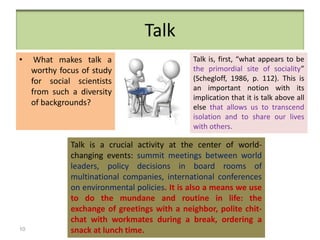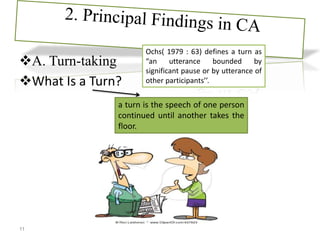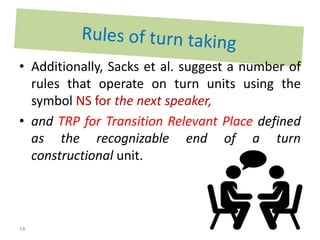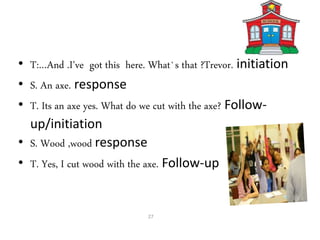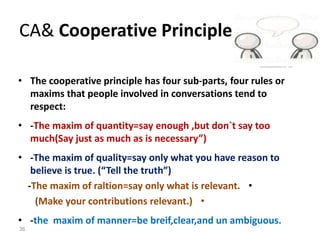The document discusses key concepts in conversation analysis (CA). It defines CA as an approach to studying social interaction through both verbal and non-verbal communication. Some main points covered include turn-taking rules and mechanisms, adjacency pairs and their functions, repair strategies, and applications of CA such as in education settings. CA takes an inductive approach, using recordings of natural conversations to understand patterns of interaction, in contrast to deductive approaches like discourse analysis.









